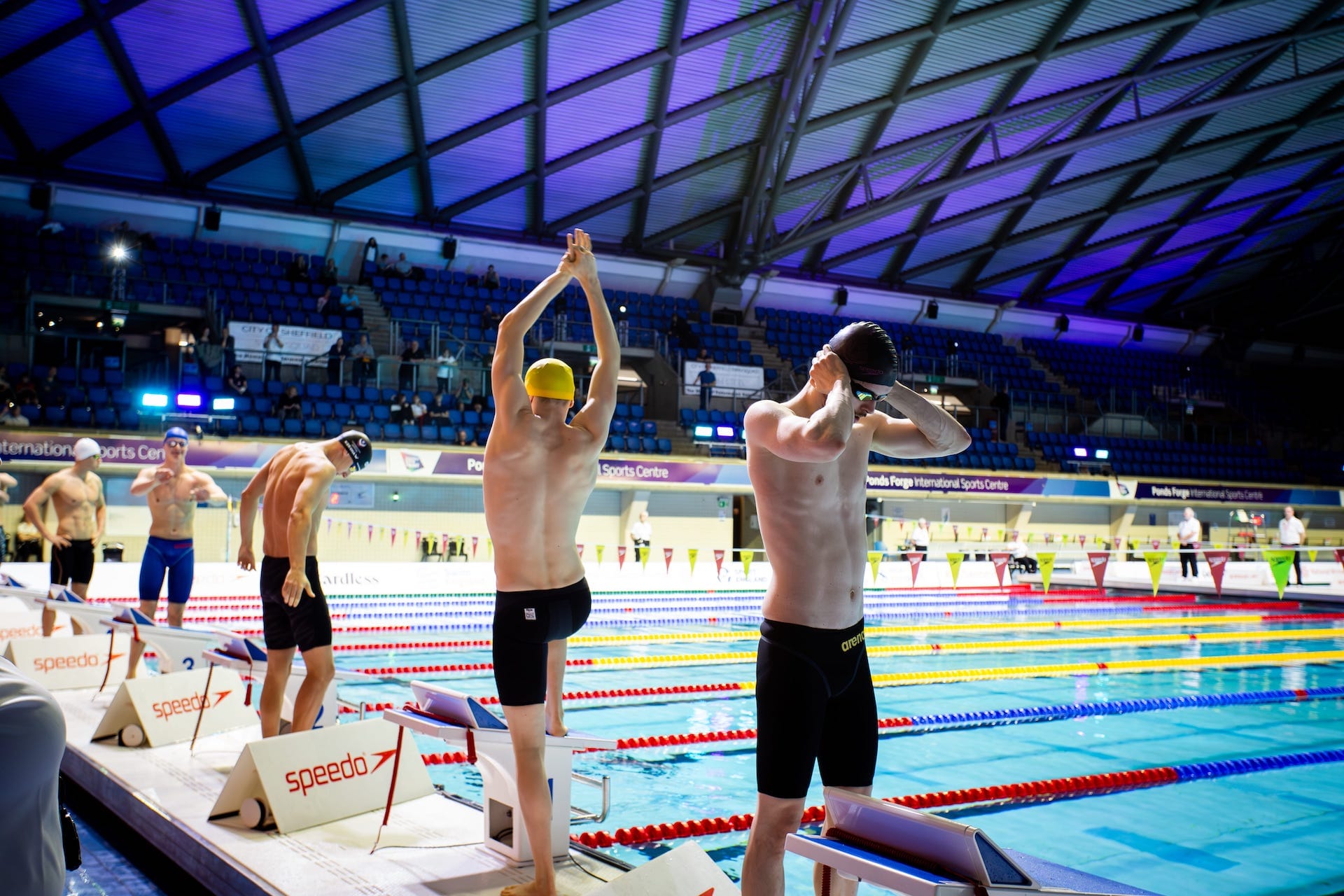This past weekend, I participated in the Swim England National Winter Championships. I was entered in for the 50 meter butterfly and 100 meter individual medley.
I grappled with injuries in the build-up to this competition, which meant most of my training comprised of pull sets with the aid of a pull buoy. I also increased both my swim training volume and gym sessions with more weight in the weeks preceding the meet. As a result, I was not well-rested when it came to my races.
To add insult to injury1, I found myself seeded in the fastest heats scheduled for early morning. If you are familiar with Ankylosing spondylitis (AS), you will understand that individuals with this condition typically take some time to “defrost” in the morning.2
50m butterfly heat
I am not even going to bother discussing this race. 😅
Moral of the story: Get ready and suited up well before your race.
100m individual medley heat
I wanted to experiment with the underwaters during the butterfly and backstroke legs to see what time that would enable me to go for the first 50 meters. I clocked a time of 26.1s, which, considering my current fitness level, is probably a fraction too fast. I felt my lungs burning by the time I reached the 75-meter mark.

100m individual medley senior final
Final time: 58.23s

Following a discussion with my former University of Warwick teammate, James Le Grice, we decided to aim to go out in 26.4s. On paper, this appeared to be the sweet spot at my current fitness level.

So, I went out in 26.39s.
During the butterfly leg, I tried breathing every stroke, which proved effective. I maintained the same pace compared to my previous races and lost less oxygen in the process. In the backstroke, I eased off slightly by reducing the underwater phase by one kick. This meant I had sufficient energy to swim the breaststroke leg properly and, at the very least, kick a bit during the final freestyle leg.
For the freestyle leg, I focused on maintaining composure a little more rather than allowing my arms to swing aimlessly, like I did at Regionals. Despite this effort, the last 25 meters still felt like “survival freestyle”. Clearly, there is room for improvement in my conditioning to avoid struggling at the 75-meter mark.
In the end, I managed to drop a new personal best: 58.23s.
Conclusion
What I love the most about Nationals is that one can learn so much by watching the other swimmers race. It is one thing seeing swimmers on a screen, it is a complete different experience witnessing their swims in person.
Moreover, Nationals offers an excellent opportunity for networking. During the event, I met some amazing people, including the Head Swim Coach of University of Birmingham, Gary Humpage, and Jamie Ingram, a silver medalist in the Commonwealth Games. Jamie offers a service for reviewing race footage tailored to swimmers of all abilities. Having personally used this service, Jamie offered valuable advice for improving my butterfly technique. I wholeheartedly recommend this service to fellow swimmers.
My main takeaways from my racing is that I need more conditioning. Further, I may be able to stick to breathing every stroke in butterfly without losing any momentum.
Oh… and I need to get my tech suit on well before it is time to swim.
Pun definitely not intended. ↩︎
Maatallah, K., Makhlouf, Y., Ferjani, H., Cherif, I., Nessib, D. B., Triki, W., Kaffel, D., & Hamdi, W. (2022). Factors associated with the inflammatory process in pain in ankylosing spondylitis. The Pan African medical journal, 41, 331. https://doi.org/10.11604/pamj.2022.41.331.31312 ↩︎